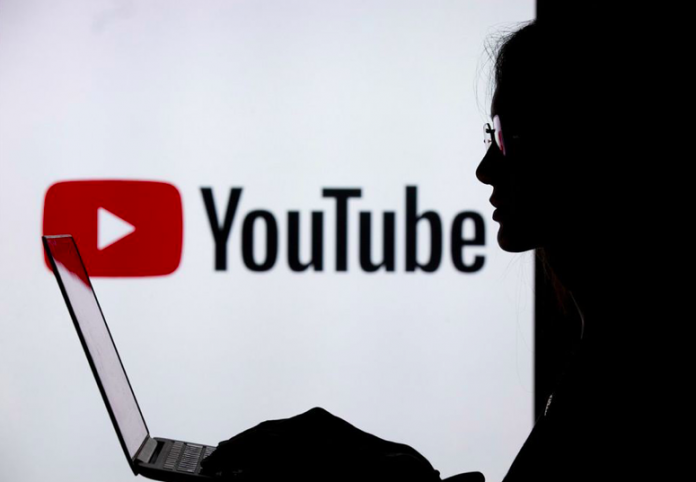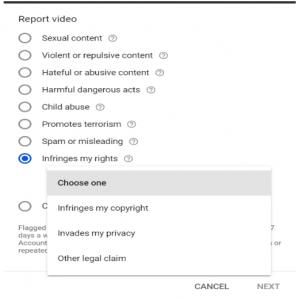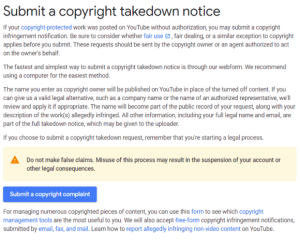This article is written by M.Arjun, a 5th-year student studying in Government Law College, Thrissur. The article deals with what YouTubers should know about YouTube’s Copyright Policy.
Table of Contents
Introduction
With more than 31 million active channels and technically being the world’s second-largest search engine, YouTube has become a lucrative career for content creators. Back in its initial days, Youtube as a video-based platform was not monetized. The acquisition of YouTube by Google and Google’s acquisition of ad management solution DoubleClick, enabled YouTube to run advertisements, thereby generating revenue for the company as well as the community. The monetization fueled the growth of youtube empowering it to be one of the present-day giants of the ever-growing digital media industry.
The biggest strength of YouTube is that it is open and accessible for the masses. Around 500 hours of video are being uploaded to the platform every minute. YouTube has become the go-to option for video consumption on the internet for over 2.5 billion monthly users throughout the globe. YouTube’s monetary rewards have attracted a large number of audience towards the platform. Various malpractices for triggering income from YouTube such as copyright infringements, duplication and reuse of original content became frequent. These practices drastically impact the monetary benefits of the original content creators. Hence, YouTube treats copyright as an important issue and has developed a detailed copyright policy to tackle the issues relating to it.
YouTube’s Copyright Policy
Youtube takes copyright infringement seriously and a video alleged to be infringing the copyright of the original owner is normally blocked or taken down. If a person uploads a video created by someone else, then he is said to have committed a copyright infringement if he has uploaded the video without valid permission or license for the same. YouTube does not permit any user to use the content of the right owner even if they do not have any monetary interest in copying the content. Even copying a very minute portion of a youtube video is considered as an infringement.
A video uploaded to youtube is taken down or blocked for 2 reasons:
- When there is a takedown notice against the video; and
- When there is a content-id mismatch.
Takedown Notice
When a copyright owner feels that an infringer has uploaded his content on YouTube, he can file a takedown notice through the platform. A takedown notice is a formal notice governed by the principles of law. YouTube reviews the notice and takes down the content if it is satisfied that the infringer has breached the rights of the owner. A person filing the takedown notice has to be sure about his rights as he is initiating legal action against the opposite party.
Content Id Mismatch
While filing takedown notice is a legal action, Youtube has developed a unique copyright enforcement tool called a “Content Id”. YouTube grants a content-id for videos exclusively to the copyright owners. Whenever a video is uploaded to youtube, youtube algorithm scans whether the audio or video uploaded matches with millions of those uploaded to the platform. When it finds a match, youtube by itself files a copyright claim for the owner, liberating the owner to take action by himself. When there is a content-id mismatch the owner of the video has 3 options:
- To block the video.
- To monetize the video- The owner gets more ad traffic for his infringed video which generates more revenue for the owner. The copied content does not receive any monetary gain but the video remains on the platform.
- The owner gets viewer data to get the detailed information regarding the video such as the country or area within which the video has received good popularity.
Content id allows the users on the platform to create modification works and funny videos from the original content without hurting the interest of the right owners. The main aim of the content id is to minimize takedown notices. However, the owner is always at the option to block the video or to select a more rewarding option without blocking the usage of the video by the other party. In 2018 a news report, YouTube’s chief business officer Robert Kyncl said that in more than 90% of Content ID cases, copyright holders opt to collect revenue. Youtube has paid out billions of dollars to the content owners when there is a content-id mismatch. This is to ensure that more users and videos remain with the platform. The news report also claims that 98% of the copyright issues in youtube is addressed through the content id mechanism.
In July 2018, YouTube introduced a tool called “Copyright Match” tool which is a shortened version of the Content ID system. The tool is available to the channels with more than 100,000 subscribers. It helps these channels by preventing the infringers from downloading their videos and re-uploading it to a different channel for monetary gains.
Laws Governing the Policy
YouTube’s takedown policy is based on the provisions incorporated under the Digital Millennium Copyright Act 1998. It forms the basis of youtube’s copyright strike mechanism. YouTube has to comply with DMCA to avail its “Safe Harbor Protection”. Safe Harbor Protection protects online service providers such as YouTube from copyright liability for innocent hosting infringed content in its own platform. Hence, youtube is bound to act as per the DMCA for any copyright claims through a takedown and notice process. When youtube receives a DMCA takedown notice it takes the alleged video immediately.

Why Should YouTubers Understand The Policy?
Most of the content creators in youtube are motivated to create content for the reason that it generates decent revenue for the YouTubers. For this purpose, a channel has to enable monetization and the video uploaded should be as per the “Advertiser Friendly Guidelines” prescribed by youtube.
The primary source of income through youtube comes through running advertisements in the video. A channel becomes more exposed to advertisements when the popularity of content increases. So, when a content created by a party is reused or re-uploaded by another party, the content gets duplicated and the owner of the video loses revenue. Hence a YouTuber should always be well versed with YouTube’s copyright policy along with the procedures governing copyright strike down and content-id mismatch.
YouTubers whose rights are violated should know how to file takedown notices for taking down the infringing video. Those who are notified with a copyright strike down notice, should be aware of their remedies such as filing a counter-notice under the DMCA.
A video purported to match with the content of a subsisting video is either blocked or loses its capability to generate monetary gains for the creator. On the other hand, YouTubers should also be conscious of their rights such as disputing a content-id match.
Success as a Youtuber greatly depends on the viewership of his videos. If his content is being reused or duplicated, the viewership gets segregated. There were instances were youtube had to take down a modified video as it got more views than the original one. Also, YouTube pays out revenue to the infringer until a claim is made by the original owner. It is not conducive for the content owner to claim the profits made by the infringer before the copyright claim is made. Timely action in cases of copyright claims helps to tackle this issue, thereby generating more views for the content created by the owner.
What To Do When Someone Copies Your Content?
When YouTube’s content-id system does not recognize the copying of original content, a YouTuber can report the same. Things such as channel art, video description, the portion of a video or the full video can be reported to the platform.
Step 1: Click on report option found under the video that is alleged to be infringing your right and select the option “Infringes My Rights” and then click on “Infringes My Copyrights”.
Step 2: Once you are sure that you hold the rights for the content and if the usage of the content does not come under the fair dealing or fair use, a copyright takedown notice can be made by filling a webform provided by the platform. Click on the “Submit Copyright Complaint” option.
Step 3: You will have to specify the party affected by copyright infringement and paste the URLs of the infringing video and original video. Youtube provides an option to add multiple videos if more than one of your videos are found to be copied.
Step 4: To make a complaint under the DMCA, you will have to enter a few personal details such as your legal name, address, email id, phone numbers and so on. A declaration has to be made stating that the notice made is:
- Accurate.
- In good faith.
- The party is aware of the legal ramifications in case of a false notification.
- Complainant is the owner or authorized agent who can act upon the infringement of such exclusive right.
- Use of the content is not authorized by the copyright owner.
Step 5: Youtube will send you a mail regarding the confirmation of the takedown request and shall also notify the opposite party about the complaint filed against him.
Filing a takedown notice is initiating a legal proceeding against the opposite party under the DMCA. Hence the person submitting such complaint should always keep in mind that a false allegation can result in the suspension/termination of his youtube account and he may be liable for other legal consequences as well. In cases where the copyright owner finds that he had misidentified the content or had submitted an infringement notification by mistake, youtube provides an option for retracting such notification. YouTube provides a procedure for retracting such complainants. A creator affected by such notification can request the complainant directly to make a retraction.
What Happens When A Video Is Taken Down?
When a video has been taken down as a result of a legal notice filed by the owner of the content its termed as a “copyright strike”. YouTube takes down such videos on the request of the owner for complying with the copyright laws such as the DMCA. When the creator gets a copyright strike for the first time, it acts as a warning and the person is taken to youtube’s “Copyright School” wherein the creator has to watch some videos and answer some questions on the copyright policy followed at youtube. When an account is subjected to a copyright strike, it loses the ability to monetize the content. Details of the copyright strikes can be accessed from the “YouTube Studio” application or website.
When your channel gets 3 copyright strikes:
- Your account, along with any associated channels, is subject to termination.
- All the videos uploaded to your account will be removed.
- You can’t create new channels.
A copyright strike can be resolved by:
- Filing a counter-notice if the video was taken down mistakenly or if the use of the content comes under fair use or fair dealing.
- Asking the complainant to retract their copyright infringement notice.
- After the expiry of 90 days.
What To Do When A Video Is Removed For Copyright Infringement?
When a video is removed for copyright infringement, the creator of such video usually has 2 remedies:
-
- Filing A Counter-Notice in reply to a takedown notice filed under the DMCA; When a copyright owner files a takedown notice for uploading a video without his authorization, youtube takes down the video. However, the opposite party can file a counter-notification for reinstating the removed video. A counter-notification can be filed only when the party is sure that his use of the content comes under the fair use policy or if there is a misidentification of content by the copyright owner. If the video is removed for other reasons, the opposite party has to wait until the expiry of the copyright strike. YouTube reviews the counter-notification and evaluates the ground by which the creator has contested against the takedown notice. After which, the counter-notification is forwarded to the claimant. The claimant within 10 days, has to provide the evidence of initiating a legal action to keep the content down. A counter-notification can be filed by logging in the “YouTube Studio” feature. Users whose account has been suspended can file a free-form counter-notification.
- Disputing a Content-id claim: A content creator whose video has been found to be matching with existing content can dispute such claim:
- If the content was misidentified
- if the creator has valid authorization or licenses to use such content.
- If the usage comes under fair use or fair dealing
- If it is your original content.
When a content-id dispute is filed, the copyright owner gets a 30 day time period to respond. If the copyright owner fails to reply within 30 days, the claim expires on its own. The copyright owner can:
- Release the claim: If they agree with your dispute, they can release their claim. If you were previously monetizing the video, your monetization settings will be restored automatically when all claims on your video are released.
- Uphold the claim: If they believe their claim is still valid, they can uphold it. If you feel it was mistakenly upheld, you may be able to appeal their decision.
- Takedown your video: They can submit a copyright takedown request, which means you’ll get a copyright strike on your account. A counter-notification can be filed at such instances.
When a content-id dispute is initiated, the monetization of the content is withheld and it is distributed later to the appropriate party.
Provisions For Fair Use
Fair use allows a creator to reuse the content created by the copyright owner without his permission. Fair use is applicable only on certain circumstances and the provisions for fair use or fair dealing aren’t determined by Youtube. Content creators have to be careful while using the content belonging to the copyright owner. Youtube’s content id system may not recognize fair use since it is a relative concept. Using a small portion of the content, using the same with disclaimers or usage without monetary intentions does not mitigate the risk of copyright infringement. Hence, there is always a risk in using copyrighted material in the name of fair use. Fair use differs from country to country and is decided by a Court of Law. Commentaries, criticism and research are normally accepted as fair use in the United States. US courts consider factors like the quantum of the content copied, the scope of the reused content, and impact on monetary gains of original content for determining fair use. Youtube has introduced various features that allow claimants to specify timestamps of infringements while making fair use claims. It provides tools for easy removal of claimed music or content and to swap it with copyright free content from “YouTube’s Audio Library”.
Conclusion
From September 2019, YouTube shut the option for music companies to make manual claims. YouTube, in a blog post, announced the changes in its manual claim policies to prevent music companies from stealing the revenue of content creators in youtube. The platform considers music companies to be using the manual claiming option in an unfair and aggressive manner. The manual claiming policy is different from its content-id system in such a way that the copyright owner themselves identify the infringement instead of relying on youtube’s automated tool. Music companies were said to be looting the revenue of creators even when the music is played unintentionally for a second. For eg, a blogger who is making a live recording walks past a store that plays a copyrighted song loses all his revenue to the music owners. To tackle this issue, Youtube has made it compulsory for claimants to add timestamps for pointing out the infringement while making complaints. Content creators are given the option to trim out such portion from their videos and add copyright-free content from “YouTube’s Audio Library”. They can now monetize the video after removing such portions. Copyright holders can now only prevent the creators from monetizing the video or block the content. The ability of the copyright holders to monetize the infringing video is now minimized.
References
- https://www.youtube.com/intl/en-GB/about/copyright/#support-and-troubleshooting
- https://support.google.com/youtube/answer/2797449?hl=en
- https://www.dummies.com/business/marketing/social-media-marketing/10-things-to-know-about-copyright-and-youtube
- https://www.tubefilter.com/2018/11/07/youtube-payouts-content-id/
- https://www.theverge.com/2019/8/15/20806189/youtube-manual-music-copyright-claim-update-more-blocked-videos
Students of Lawsikho courses regularly produce writing assignments and work on practical exercises as a part of their coursework and develop themselves in real-life practical skill.
https://t.me/joinchat/J_0YrBa4IBSHdpuTfQO_sA
Follow us on Instagram and subscribe to our YouTube channel for more amazing legal content.
 Serato DJ Crack 2025Serato DJ PRO Crack
Serato DJ Crack 2025Serato DJ PRO Crack












 Allow notifications
Allow notifications



